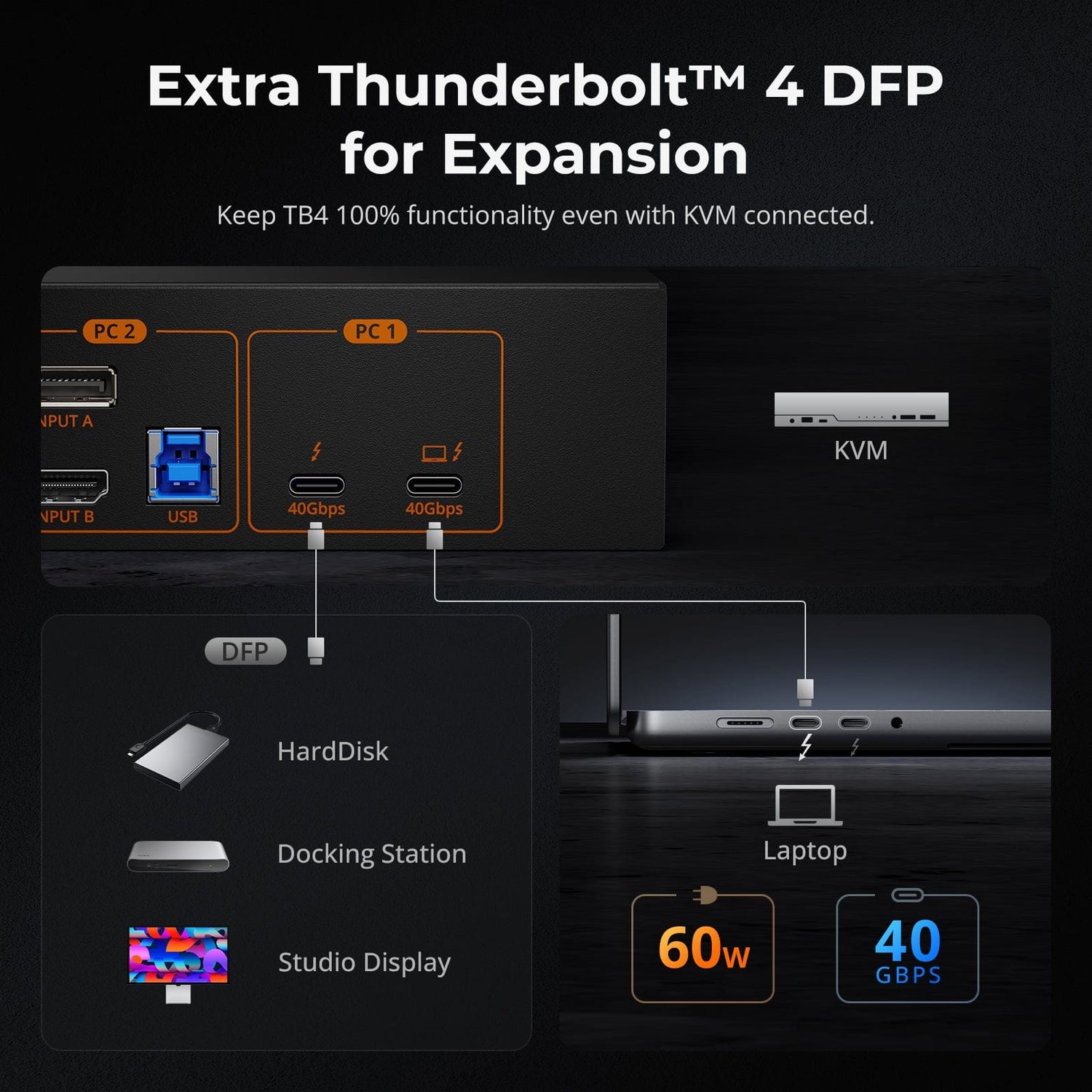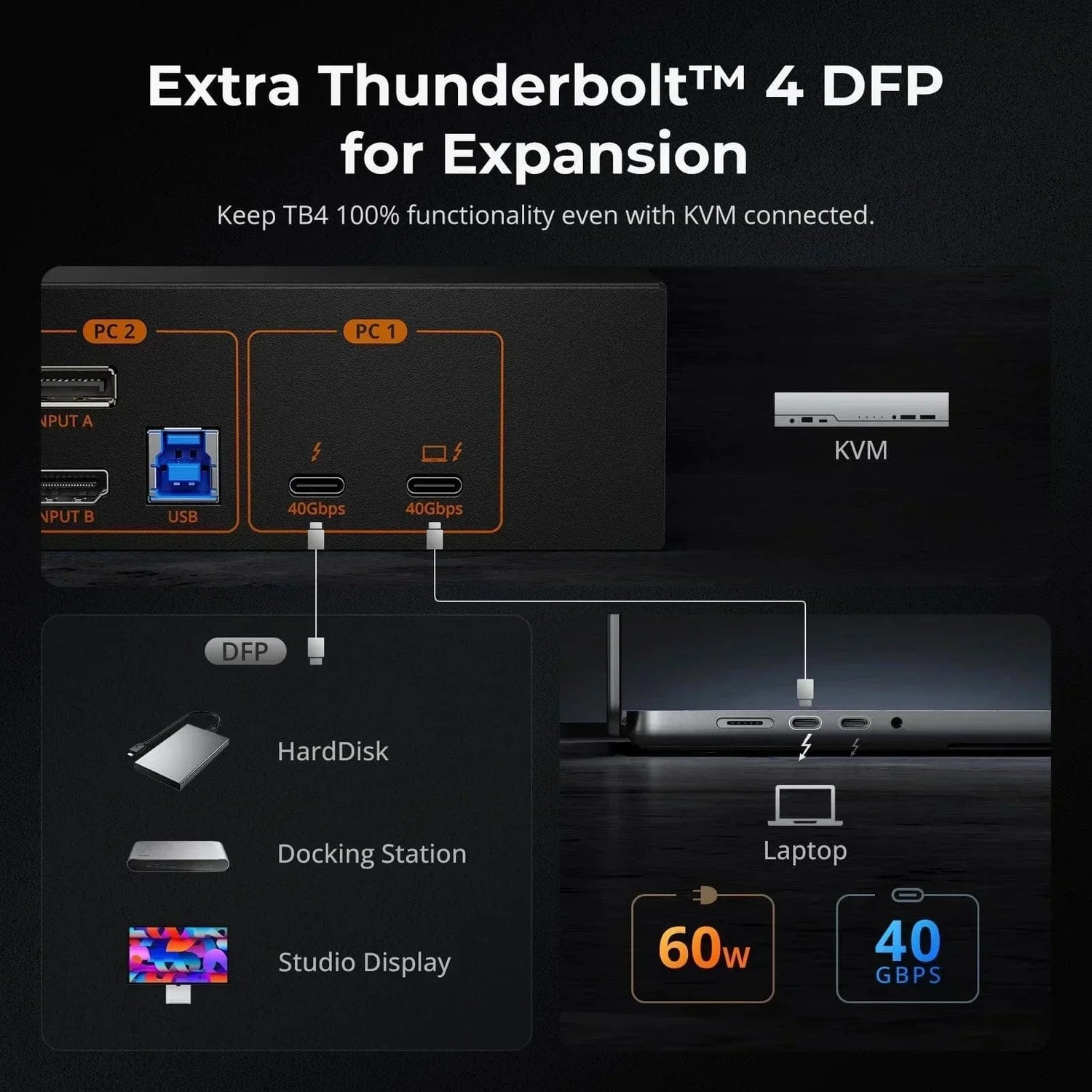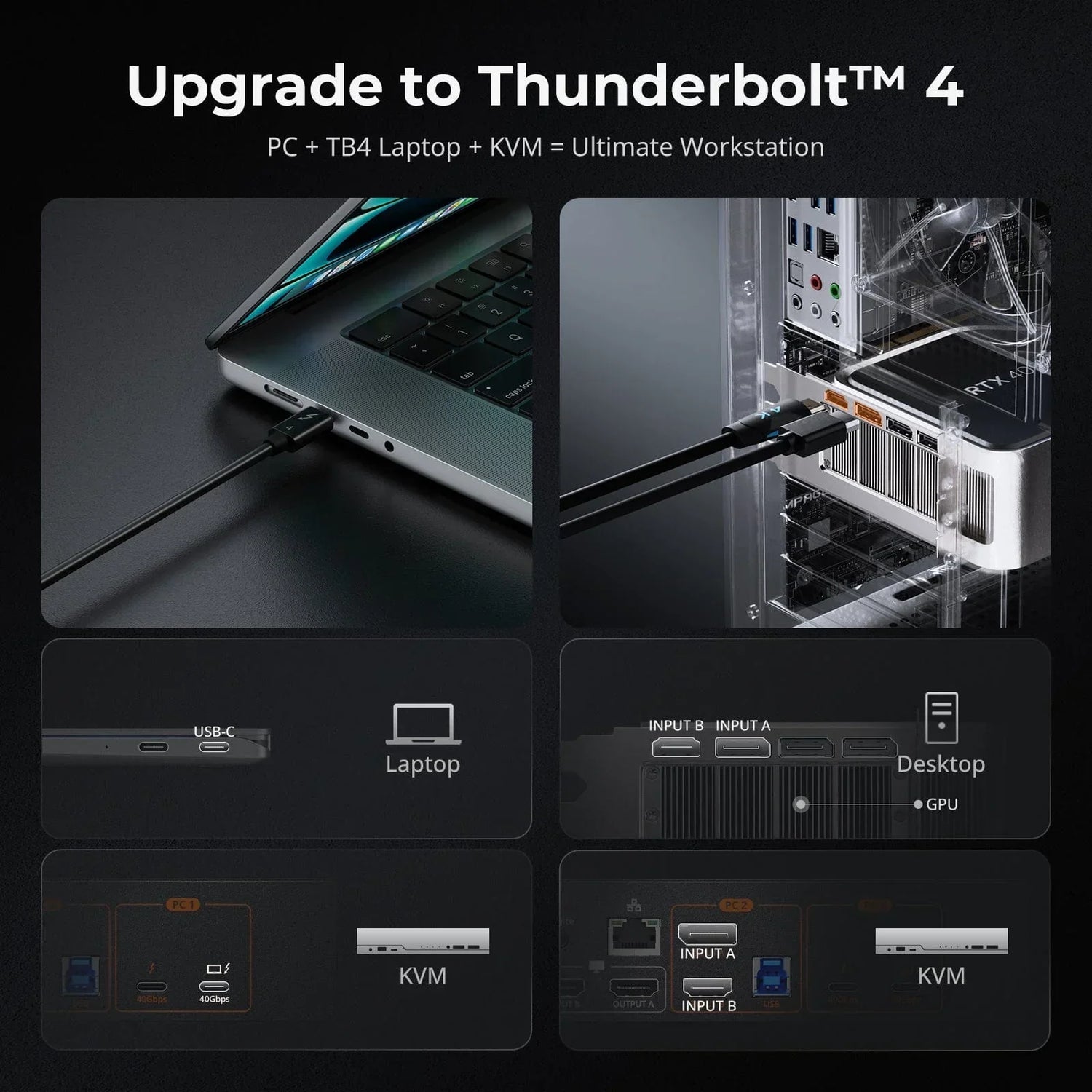The modern home entertainment setup often includes a variety of devices, from gaming consoles to streaming boxes, all requiring seamless HDMI connections. To avoid the hassle of constantly swapping cables, HDMI splitters and switches offer practical solutions. While these tools might seem similar, they serve different purposes. Understanding their unique functions can help you choose the right device for your setup. Let’s take a closer look at what each device offers and how they can be integrated into your home setup.
What is HDMI Splitter?
HDMI splitter takes one HDMI signal and splits it into multiple signals, sending the same signal to multiple display devices. It’s very useful when you have one source (like a DVD player or game console) but want to display the same content on multiple screens. For instance, if you have a Blu-ray player and want to show the same movie on both your living room TV and bedroom TV, you can use an HDMI splitter to send the signal to both TVs.

What is HDMI Switch?
HDMI switch allows you to choose between multiple HDMI sources and send one selected signal to a single display device. So when you have a TV and want to connect multiple devices (like a PS5, Apple TV, and Blu-ray player) to it, you can use an HDMI switch to easily switch between these devices without having to unplug and plug in different HDMI cables.

Differences Between HDMI Splitters and Switches
Apart from their essential differences in usage, there are some alternative perspectives on the differences between HDMI switches and HDMI splitters:
Signal Handling
- HDMI Splitter: Focuses on duplicating and distributing identical HDMI signals to multiple displays simultaneously.
- HDMI Switch: Primarily manages the selection and routing of HDMI signals from multiple input devices to a single display or output.
Utility in Setup
- HDMI Splitter: Ideal for scenarios where the same content needs to be displayed on multiple screens, such as presentations in conference rooms or watching a movie on multiple TVs.
- HDMI Switch: Beneficial when you have several devices but only one display, facilitating seamless switching between different sources like gaming consoles, streaming devices, and Blu-ray players.
Configuration Flexibility
- HDMI Splitter: Typically available in configurations that split one input to multiple outputs (e.g., 1x2, 1x4), offering straightforward distribution capabilities.
- HDMI Switch: Available in configurations that allow multiple inputs to be connected to one output (e.g., 2x1, 3x1), supporting versatile source selection depending on the number of devices you need to connect.
Managing Complexity
- HDMI Splitter: Simplifies the management of duplicated signals across displays, reducing the need for multiple sources or content distribution amplifiers in professional AV setups.
- HDMI Switch: Provides a practical solution for households or setups with varied HDMI sources, ensuring ease of use and efficient utilization of display resources without the inconvenience of manual cable swapping.
These perspectives highlight how HDMI switches and splitters address different aspects of HDMI signal distribution and management, catering to distinct needs in home entertainment, business presentations, and professional AV environments.
Do You Need An HDMI Splitter or An HDMI Switch?
If you're new to audio-visual equipment, understanding whether you need an HDMI splitter or switch starts with considering your devices. HDMI tools are typically categorized based on how many sources and displays they handle: one-to-many for splitters and many-to-one for switches.
An HDMI splitter divides one audio-visual signal into multiple outputs, allowing you to connect several displays with a single source. Splitters come with different numbers of output ports (e.g., 2, 3, 4), such as a 1-in-2-out splitter for distributing video to two displays.
Conversely, an HDMI switch enables you to connect multiple source devices to one display's HDMI input. This is useful when your display lacks sufficient HDMI ports, consolidating signals from several devices into one connection.
So the conclusion depends on your specific needs:
- Choose an HDMI Splitter If you have one source device (like a Blu-ray player or gaming console) and need to display its content on multiple screens simultaneously.
- Choose an HDMI Switch If you have multiple source devices (like gaming consoles, streaming devices, etc.) and need to connect them to a display or TV that has fewer HDMI input ports than devices.
Different Types of HDMI Splitters and Switches
HDMI splitters and switches can vary widely in terms of functionality to cater to different needs and applications.
HDMI Splitters for Signal Extension
HDMI splitters and switches with signal extension capabilities redefine connectivity by extending HDMI signals well beyond the standard 15-meter limit. Utilizing network cables or other suitable mediums, these devices can transmit signals over distances exceeding 100 meters. This ensures compatibility with a wide range of display devices, offering flexibility in AV setups across large spaces or complex installations.
HDMI Switches with KVM (Keyboard Video Mouse) Function
HDMI switches integrated with KVM functionality elevate user control beyond audio-visual transmission. They enable the transmission of essential control signals—such as keyboard, video, mouse (KVM), IR, and RS232 signals—allowing users to operate multiple devices simultaneously from a single interface. This capability streamlines workflow management and enhances operational efficiency in diverse professional environments.
TESmart KVM Switches redefine the concept of multitasking by offering versatile solutions to meet a wide range of setup demands. They come with complete PC cables, allowing you to efficiently manage two PCs with a single keyboard, mouse, and dual 4K60Hz displays. From solutions for 2PCs&1 Monitor to advanced 8/16PCs& 8/16 Monitors, TESmart KVM switches cater to every need. The switches offer flexible display modes (extend or split desktop), multiple input switching options (hotkeys, front button, remote control), and seamless operation with EDID emulation. They support a wide range of keyboards and allow for USB and audio peripheral sharing, making them compatible with Windows, Mac, and Linux for versatile use in home, office, or educational settings. With expanded multi-functional ports, built-in power, and a network switch, TESmart KVM switches transform any setting into a high-performance workstation.
HDMI Matrix with Multi-viewer
Traditionally, HDMI switches require manual switching to view content from different sources. However, combining this functionality with matrix switching capabilities, HDMI multiviewers revolutionize user experience by offering multi-screen splitting functions. These advanced devices not only divide a single display into quadviews but also allow for dynamic matrix switching, enabling simultaneous viewing and control of content from multiple sources across several displays.
TESmart 4x4 4K HDMI Matrix Switch with RS232 and Quad Multi-Viewer HMA404-L23 connects any of 4 HDMI sources to any of 4 HDMI displays, supporting high resolutions up to 3840x2160@30Hz 4:4:4 and is HDMI 1.4 and HDCP 1.4 compliant. Each HDMI output supports Quad Multi-Viewer mode with resolutions up to 1920x1080@60Hz. It features smart EDID management for compatibility with most display devices and offers easy control via IR remote control, front keypad, or RS232 serial commands.
Other Frequently Asked Questions
What are active and passive HDMI splitters/switches?
Active HDMI splitters/switches use external power to boost and extend HDMI signals, supporting longer distances and higher resolutions. Passive HDMI splitters/switches do not use external power and are best suited for short distances and basic setups without significant signal enhancement needs.
Do HDMI splitters and switches affect performance?
While basic switching and splitting functions are unlikely to affect performance, additional features like signal extension can impact the signal quality. Extending HDMI signals over long distances can introduce latency or degrade picture quality if the devices are not designed to handle such distances effectively.
Can HDMI switches support 4K resolution?
Yes, HDMI switches can support 4K resolution. However, the ability to support 4K depends on the specifications of the HDMI switch.
Do all HDMI switches support EDID and HDCP?
No, not all HDMI switches support EDID (Extended Display Identification Data) and HDCP (High-bandwidth Digital Content Protection). The support for these features depends on the specific design and intended use of the HDMI switch.








